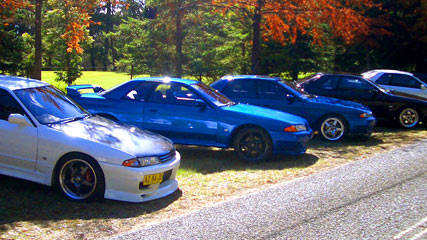Worst day ever?
By Bryce Levido · 04 Jun 2009
I wasn’t immune to this disease, however misguided I was in the early days. Now, back in the mid-90s there were only two import cars that were affordable, ‘chuckable’, and not made in Korea. The Nissan Pulsar SSS and the Suzuki Swift GTi.The later was particularly affordable with close to new models for around $14000. A real bargain at the time, and a bargain I couldn’t resist.Being 19, I was super-keen to turn the interior purple, paint the engine bay in a variety of colours, and put masses of stickers all over the car. Rice-it-up, in other words. Oh, the perils of youth.So in went the purple vinyl door cards, purple-sprayed rocker cover, lowered springs (on stock shocks mind you), a loud muffler, race steering wheel, racing harnesses, and finally a ‘phat’ stereo with double 10”. All installed by yours truly.Having just completed the install of all these parts over a period of six months, I took my partner at the time and some friends on a nice Sunday drive to the Jenolan Caves. A 1.3 litre car with lowered suspension and four people onboard, and a massive sub-box in the boot is not quite the ideal vehicle for such a cruise, but none the less we headed off.During the trip, my DIY stereo system started playing up and eventually gave up the ghost all together, and the rattle in the boot that had been bugging me for months of course decided to rear its ugly head once more. Turning a leisurely two-hour drive into a highly annoying trip to hell.Finally arriving at the top of the seriously tight winding road heading to the Caves, we got out of our convoy and headed into the caverns to check out what all the fuss was about. By this time we were tired and the weather was turning sour. And just our luck, halfway through the first cave the lights went out…Leaving the caves by torchlight and being told `show’s over folks’, we headed off back to Sydney. An hour later our convoy buddy was on the mobile calling for a lunch stop. Then without warning, buddy’s car comes to a grinding halt in the middle of the Great Western Highway. Apparently when they meant stop for lunch, they meant right now. Being then a more sprightly 20-year-old, I managed to stop the car in time to avoid an accident. Unfortunately the three cars behind us were not so lucky. We were slammed into our buddy’s car three consecutive times.After the police arrived and saw that most people were OK (one person hit the windscreen and was taken to hospital but was later discharged), my car was analysed. The damage to the little Swift wasn’t too bad, though the bumpers were hanging down a bit low, and it was towed to a holding yard in Blackheath for the rest of the weekend.We all got back to Sydney on the train and the next night -- shaken and stirred --I received a call from Blackheath Police. The night of the accident, the holding yard was broken into and my newly modified GTi had been stripped bare. Some bastard had taken everything… seats, stereo, rims, steering wheel and even the battery. From a locked, fenced holding yard. I was shattered. All that time…all that money…and for what? And just to sink the boot in, the holding yard held no responsibility, meaning I lost my no-claim status.But you live and learn. My ideas about how one should modify a car have matured over the years, and all those bling items have been avoided in my later cars. I’ve also avoided the Caves since that day. Damn I hate that place…















